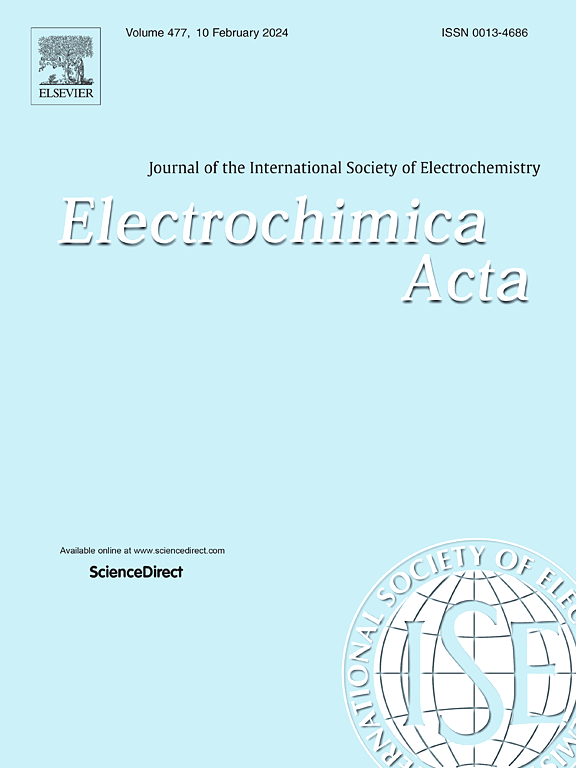Water Electrolysis using fluorine-free, reinforced Sulfo-Phenylated Polyphenylene Membranes
IF 5.5
3区 材料科学
Q1 ELECTROCHEMISTRY
引用次数: 0
Abstract
Fluorinated proton-exchange membranes (PEMs), such as Nafion™, which is the current state-of-the-art polymer, present environmental challenges, driving the need for more sustainable alternatives for proton-exchange membrane water electrolysis (PEMWE) systems. However, fluorine-free membranes like sulfo-phenylated polyphenylene biphenyl ones (sPPB-50) often suffer from mechanical instability, excessive swelling, and limited cell durability, which hinder their practical applications. This study explores reinforced fluorine-free sulfo-phenylated polyphenylene membranes (Pemion™) with thicknesses of 15 µm (Pemion-15) and 40 µm (Pemion-40) as a potential solution to these issues. Pemion membranes were compared with both sPPB-50 and Nafion™ 112 (N112), focusing on key properties such as water uptake, dimensional swelling, proton conductivity, and durability in PEMWE applications. The results show that Pemion-reinforced membranes exhibit good performance for PEMWE allowing high current densities at lower voltages. Pemion-40 exhibited a low hydrogen gas crossover compared to sPPB-50 and N112. Under a constant current of 1 A cm−2, Pemion-40 exhibited a voltage loss rate of 1.46 mV h−1 over 100 hours of operation. This study highlights the importance of structural reinforcement in enhancing the stability and efficiency of fluorine-free membranes, providing a promising route for sustainable alternatives in PEMWE systems.

使用无氟强化磺化苯基聚苯膜电解水
含氟质子交换膜(PEM),如目前最先进的聚合物 Nafion™,带来了环境挑战,促使人们需要为质子交换膜电解水(PEMWE)系统寻找更具可持续性的替代品。然而,磺化苯基聚苯乙烯联苯(sPPB-50)等无氟膜通常存在机械不稳定性、过度膨胀和电池耐久性有限等问题,阻碍了它们的实际应用。本研究探讨了厚度为 15 微米(Pemion-15)和 40 微米(Pemion-40)的增强型无氟磺化苯基聚苯膜(Pemion™),作为解决这些问题的潜在方案。我们将 Pemion 膜与 sPPB-50 和 Nafion™ 112 (N112) 进行了比较,重点关注 PEMWE 应用中的吸水性、尺寸膨胀、质子传导性和耐久性等关键特性。结果表明,Pemion 增强膜在 PEMWE 中表现出良好的性能,可在较低电压下实现较高的电流密度。与 sPPB-50 和 N112 相比,Pemion-40 的氢气交叉率较低。在 1 A cm-2 的恒定电流下,Pemion-40 在 100 小时的工作时间内电压损失率为 1.46 mV h-1。这项研究强调了结构强化在提高无氟膜稳定性和效率方面的重要性,为 PEMWE 系统中的可持续替代品提供了一条前景广阔的途径。
本文章由计算机程序翻译,如有差异,请以英文原文为准。
求助全文
约1分钟内获得全文
求助全文
来源期刊

Electrochimica Acta
工程技术-电化学
CiteScore
11.30
自引率
6.10%
发文量
1634
审稿时长
41 days
期刊介绍:
Electrochimica Acta is an international journal. It is intended for the publication of both original work and reviews in the field of electrochemistry. Electrochemistry should be interpreted to mean any of the research fields covered by the Divisions of the International Society of Electrochemistry listed below, as well as emerging scientific domains covered by ISE New Topics Committee.
 求助内容:
求助内容: 应助结果提醒方式:
应助结果提醒方式:


